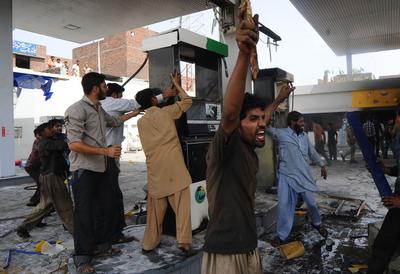In 1985 during a previous crisis, the government encouraged private sector participation, but failed due to high levels of bureaucratic red tape. In 1994 a power policy was introduced, with the objective of granting independent power producers greater discretion over their operations.. But still Pakistan failed to meet its rising energy demand.
Another energy crisis occurred in 2002 and the government introduced a new policy, ‘Policy for Power Generation 2002’. One of its features was to provide sufficient capacity for power generation at the least cost — as well as encouraging domestic resources — through the formation of joint ventures with foreign companies.
According to the BP Statistical Review of World Energy 2012, in 2011, natural gas alone provided around 52 per cent of Pakistan’s total energy requirements, followed by contributions from oil, hydropower, coal and nuclear energy that respectively made up 30 per cent, 11 per cent, 6 per cent and 1 per cent.
According to this same source, natural gas consumption in Pakistan reduced from 35.7 million tonnes of oil equivalent (mtoe) in 2010 to 35.2 mtoe in 2011. Oil and coal consumption similarly followed a downward trend. Resulting from the shortfall in meeting demands of energy from its domestic sources, Pakistan’s fossil fuel import bill rose to US$15.25 billion during the 2011–12 fiscal year, compared to US$12.08 billion during 2010–11 fiscal year. Natural gas shortfalls have also resulted in making tens of thousands of the poor jobless and have impacted on the fertiliser and transport sectors.
According to the Asian Development Bank’s outlook, released in April 2012, it is the energy crisis as well as security issues, high inflation and a decline in investment, which have severely crippled Pakistan’s economy. Currently, against current demand for 17000 megawatts, only 9000 megawatts of electricity is generated. For citizens, load-shedding for 18–20 hours in the height of summer is making life worse. Power shortages have also impacted optimal production in various industries. For example, the textile industry that can potentially bring in profits of US$1 billion per month is heading toward forced closure because of the power crisis.
The other reason for the fall in electricity generation is the quality of fuel inputs. During the current fiscal year Pakistan’s total petroleum product import accounted for 12.37 million tonnes, of which 53 per cent consisted of residual furnace oil. The impurity of this fuel, which accounted for 34.5 per cent of electricity produced, is regarded as another fundamental cause of energy crisis in Pakistan.
The government’s inability to construct new dams has only exacerbated the power crisis. In the midst of this crisis the High Court has ordered the federal government to implement the decision of the Council of Common Interests and to build the Kalabagh Dam.
In the wake of this current crisis, India and Pakistan have begun to seek common ground. The first such meeting on this subject was during 28–29 May 2012 when an Indian delegation visited Pakistan. An expert group meeting followed on 17–18 July. Progress so far has not yielded tangible results. There are challenges in progressing Indian–Pakistan energy trade forward, despite recent initiatives taken by these countries to improve bilateral trade.
Recently, HPCL-Mittal Energy Ltd (HMEL) submitted a proposal to the Ministry of Petroleum and Natural Gas on ways to enhance trade between India and Pakistan. The proposal highlighted issues faced by HMEL, such as: the uneconomical movement of certain petroleum products; the lack of direct courier facilities between India and Pakistan; the lack of mobile phone coverage; the need for Indian and Pakistan banks to open branches outside their home country; and a lack of infrastructure facilities needed to facilitate trade.
Besides the above proposal made by HMEL, India and Pakistan have decided to explore the possibility of opening a new railway route in Rajasthan (the Munabao–Khokrapar route), while using the present railway and land routes to transport petroleum products.
Once India and Pakistan decide to further improve their bilateral ties, India should not only support Pakistan in dealing with its economic and energy crises; India should also help address the issues limiting India–Pakistan trade progressing to new frontiers and with greater transparency and determination of purpose.
Tridivesh Singh Maini is New Delhi based columnist and independent foreign policy analyst.
Manish Vaid is a Research Assistant at The Observer Research Foundation, New Delhi.

